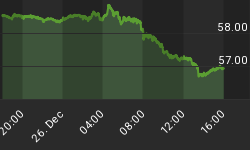High-frequency traders and day traders love high market volatility because it gives them more opportunities to place trades, while wild market swings that happen out of the blue can lead to massive losses—but even bigger windfalls.
But often this is accomplished through market manipulation, the act of illegally inflating or deflating stock prices.
It’s been an art for about as long as markets have existed, but today’s increasingly complex electronic markets have ushered in a new-breed of manipulators that can do incredible damage and go undetected for years.
In recent history, one of the best examples comes from UK-based day trader Navinder Singh Sarao, who is credited with the flash market crash of 2010. He managed to pocket $40 million through illegal trading of futures spanning several years.
Market manipulation can take many forms, and unfortunately new ones keep popping up. The most common, however, broadly fall under 3 categories:
• Spreading false information about a company
• Rigging quotes or prices in order to create a deceptive picture of the level of demand for specific stocks
• Using fraudulent methods to limit the number of shares available to the public
Here's a rundown of common manipulation techniques:
#1 Churning
Some day traders make profits by buying stocks, holding for just a few seconds and then offloading them many times a day. This is a legal trading method because the trader is exposed to some risk for the duration they hold the shares no matter how infinitesimal.
#2 Wash Trading
Wash trading is closely related to churning. It involves selling and repurchasing the same stock so as to give the impression of high trade volumes and inflate prices. Related: Bullish Developments Fail To Prop Up Gold Prices
But in contrast to churning, wash trading is an illegal practice because it constitutes buying shares, usually in large quantities, from one broker and selling them immediately through another broker without ever actually owning the shares. This is done in a bid to give a deceptive picture of volumes and inflate prices.
#3 Pump and Dump
This is a market manipulation method that involves disseminating bogus information to millions of retail investors in a bid to increase interest in a particular stock and drive up prices. The promoters then dump their holdings once the stock climbs. It’s about as easy as it comes, but involves spending on marketing and boiler rooms.
#4 Bear Raiding
A bear raid is an illegal practice whereby a group of investors gang up and conspire to push down the price of a stock through concerted short-selling and spreading of false rumors about the target company. The practice is common with traders who have opened large short-positions in a bullish stock.
#5 Market Cornering
Cornering the market involves purchasing enough stock in a company in order to be able to manipulate and control prices. Lightly traded stocks are more vulnerable to this dangerous scheme.
Right now, ranking high on the SEC’s list of market manipulations to worry about is crypto because no one’s really patrolling this segment to pinpoint. This is where pump and dump schemes will flourish because it’s that much more difficult to identity the perpetrators and bring them down—especially when the targeted scheme involves off-the-radar crypto as opposed to something as big as bitcoin.
But that doesn’t mean that bitcoin is being manipulated, too. When the Japanese-based Mt Gox crypto exchange was robbed of some $460 million in cryptocurrency, it was only after reports of massive manipulation behind the scenes that allegedly involved the use of fake accounts and transactions to bolster trading volume and make it appear that it was worth more than it was.
It's easy to fall victim to the guiles of market manipulators because regulatory bodies such as the SEC tend to act after the damage has already been done. Here are a few tips to keep you on the safe side:
• Avoid herd behavior including acting out of FUD (Fear, Uncertainty and Doubt) as well as FOMO (Fear of Missing Out). Strictly stick to your trading strategies.
• Try and pick stocks that are highly traded. These tend to be less vulnerable to manipulation.
• Do plenty of research before making investment decisions.
By Josh Owens for Safehaven.com
More Top Reads From Safehaven.com:

















